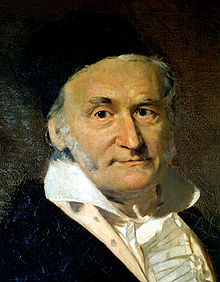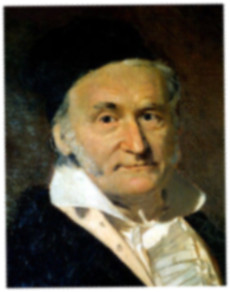Bachelor in Mathematics Student Task 2024
We group students from seven universities of the 4EU+ alliance to work on joint projects!
Each group of students is composed of one student per university. Each group of students has one mentor. Each mentor is responsible for his/her own students and for his group. Don't hesitate to contact the coordinator or the various contact persons below for more information! For Copenhagen students, this can take the form of a PUK project.
Starting date: February 5, 2024 (blok 3 for Copenhagen).
Final week: between April 4 and April 22, depending on time constraints
- Copenhagen - p-adic numbers and Hensel's lemma
- Geneva - Complex system modeling
- (Heidelberg - not this year)
- Milan - Modular arithmetic and public-key cryptography
- Paris - Dynamic systems and visualization
- Prague - Optimization problems in geometry
- Warsaw - Applications of probablility in graphs
Copenhagen
Mentor: Adel Betina
Contact person: Adel Betina and Fabien Pazuki
Topic: p-adic numbers and Hensel's lemmaProject Description: The field of $p$-adic numbers $\mathbb{Q}_p$ together with its ring of integers $\mathbb{Z}_p$ are fundamental analysis tools of modern number theory. Hensel's lemma, also known as Hensel's lifting lemma (named after Kurt Hensel), allows us to lift a factorization modulo a prime number $p$ of a polynomial over the integers to a factorization modulo any power of $p$, and hence to a factorization over the $p$-adic integers.
Gouvêa described Hensel's lemma as the ''most important algebraic property of the $p$-adic numbers''.
Here are the goals of this project:
1) Study the construction of $p$-adic numbers and to study the arithmetic of $\mathbb{Z}_p$.
2) Study the proof of Hensel's lemma.
3) Study examples of $p$-adic approximations of the roots.Time Frame:
10-12 weeks in total, submission deadlines after agreement between the participants and the coordinator.Target group: Students from year 2 and 3 (bachelor mathematics).
Learning Outcomes: Learning new methods in analysis and number theory, in particular in to solve polynomial equations.
Workload: Meetings every week, independant work online, group work.
Evaluation: Students receive a Danish grade (12, 10, 7, 4, 02, 00, -3). If you receive a numerical grade for this project with your local university, some conversion schemes will be applied. If you only receive a pass/fail, then all grades except 00 and -3 mean a pass.
Geneva
Mentor: Giovanna Di Marzo
Contact person: Giovanna Di Marzo
Topic: Complex system modeling
Lecturer: Giovanna Di MarzoDescription: Agent-based modeling is particularly useful for understanding dynamics of complex systems. It allows different levels of descriptions from micro- meso- to macro- representations. Agent-based models can be executed as programs and thus provide simulations on which we can envisage various scenarios. They can then be seen as Digital Twins of their physical counterparts.
Project Description: This project intends to build the Digital Twin of the Canton Geneva’s urban development in relation to the development of public transport (tram) lines. Establishing tram lines in dedicated areas prompts urban developments along the line. We will base our study on the DPSIR model of development (Driver, Pressure, State, Impact, Response) to understand how these urban developments evolve,
Agents represent various actors such as citizens, public transport vehicles, buildings, and various stakeholder (real estate developers, political actors, business owners). The model is developed using the GAMA tool, incorporating geo-data maps of Canton Geneva.
Expected output: DPSIR model of the various actors (agents) interacting together as a complex system. Analysis of various scenarios (existing tram lines, future tram lines)
Additional: Agents can gather their knowledge from a knowledge base (graph data base). It could be useful to understand how the agent actually leverage this knowledge and how they contribute to building it.Time Frame:
10-12 weeks in total, submission deadlines after agreement between the participants and the coordinator.Prerequisites: Complex systems knowledge/heuristics is a bonus.
Learning Outcomes:
Agent-based modeling, use of the GAMA tool, urban development modeling, programming, use of geo-data
GAMA: https://gama-platform.org/
DPSIR: https://en.wikipedia.org/wiki/DPSIR
GEO-Data Canton Geneva: https://ge.ch/sitg/Papers:
1. Agent-based modelling of urban expansion and land cover change: a prototype for the analysis of commuting patterns in Geneva, Switzerland F Chambers, C Cruz, G Di Marzo Serugendo French Regional Conference on Complex Systems, Le Havre, 2023 - https://hal.science/hal-04146986/ (short version)
2. Agent-based modeling of commuting patterns in Geneva, Switzerland, towards portraying urban expansion and land cover changes. F Chambers, C Cruz, G Di Marzo Serugendo https://www.researchsquare.com/article/rs-3452421/v1 (long version)
Heidelberg
(Not this year.)
Milan
Mentor: Ottavio Rizzo
Contact person: Ottavio Rizzo
Topic: Cryptography
Title: Modular arithmetic and public key cryptographyDescription:
We will study applications to cryptography of arithmetic properties of congruences.Modular arithmetic is the main ingredient for public key cryptography, the technique that allows people to have a private conversation in a public space without the need to share in advance a secret key. In the 2021 and 2022 BMST projects we studied in particular the issue of computing a multiplicative inverse in modular arithmetic and Pollard’s Rho Algorithm for factorization (one of the earliest modern factorization algorithms). In the 2024 BMST project we will once again begin with discovering what is public key cryptography and how modular arithmetic plays its role in the game, to later focus on how to efficiently compute the greatest common divisor of two integers and how to (inefficiently) solve the discrete logarithm problem.
Prerequisite is the first year of algebra (groups, rings, fields, modular arithmetic); some programming experience and familiarity with LaTeX is good but not strictly necessary.
Paris
Mentor: Pierre-Antoine Guihéneuf, Frédéric Le Roux, Antonin Guilloux
Contact person: Antonin Guilloux
Topic: Dynamic systems and visualizationDescription: Consider, inside the square $[0,1]^2$ in the plane, the finite grid $E_N$ composed of all points whose coordinates have at most $N$ digits. Lax theorem states that any continuous bijection from the square to itself that preserves the area can be approximated by a permutation of $E_N$ for $N$ big enough.
An example of application seems trivial at first glance: the square is a picture, and the transformation is a simple rotation (plus suitable cut-paste at the angle). The grid is then the set of pixels: how do you define the color of the pixels after rotation?


-
The picture shows that a too naive approach would not give satisfactory results. The idea of the project is to explore how to algorithmically implement Lax theorem.
To design an algorithm, you have to look at proofs! To different proofs of Lax theorem rely on rather elementary combinatorics results: Hall's marriage theorem or Birkhoff-von Neumann theorem. The goal of the project is to understand those proofs well enough to try and implement the method. Actual experiments on rotations will be encouraged.
The topic of visualization in dynamics is vast and other example could also be explored.
-
Time Frame:
10-12 weeks in total, submission deadlines after agreement between the participants and the coordinator.Prerequisite: Not much, a bit of combinatorics, maybe a pinch of probability theory. And a lot of curiosity!
Prague
Mentor: Pawlas Zbynek
Contact person: Pawlas Zbynek
Topic: Optimization problems in geometryDescription: There are a variety of inequalities involving the basic
functionals of geometric objects. These geometric inequalities could
deal with size functionals (lengths, areas, volumes, etc.) as well as
functionals connected with shape (angles, number of vertices, etc.).
Everyone knows the triangle inequality, probably the most important and
oldest geometric inequality. In the previous rounds of BMST project, we
focused mainly on isoperimetric inequality, isodiametric inequality, and
Blaschke-Lebesgue inequality. They give answers to the following
optimization problems in the plane:
1. among all sets of fixed perimeter, which one has the largest area,
2. among all sets of fixed diameter, which one has the largest area and
which one has the largest perimeter,
3. among all convex sets of fixed constant width, which one has the
smallest area?
It is possible to restrict to some smaller classes of sets (for example,
polygons). In all these examples, one functional is fixed and another is
to be maximized (or minimized).
The aim for BMST 2024 is to study various further geometric optimization
problems. We will also look at the problems where two functionals are
fixed. As an example, consider the problem of finding a set with the
largest area among all convex sets of fixed diameter and circumradius.
Each student will be assigned one or more problems to investigate. The
students will elaborate on solutions. The results will be summarized in
the report and presented on the wiki page of the project.
Warsaw
Mentor: Witold Bednorz
Contact person: Witold Bednorz
Topics: Application of probability in graphsDescription: The probabilistic method is a powerful tool for tackling
many problems in discrete mathematics. Roughly speaking the method works
as follows: Trying to prove that a structure with certain desired
properties exists, one defines an appropriate probability space of
structures and then shows that the desired properties hold in this space
with positive probability. The method will be illustrated by many
examples, e.g. Ramsey numbers, balancing vectors, packing numbers,
chromatic numbers, recoloring.Requirements:
Basics of probability theory - random variables, independence.Goals:
To study on various examples the probabilistic approach to
proving results in discrete mathematics and geometry.
Contacts
- Charles University (Prague)
Zbynek Pawlas (email: pawlas"at" karlin.mff.cuni.cz) - Geneva University
Giovanna Di Marzo Serugendo (email: Giovanna.DiMarzo"at"unige.ch) - Heidelberg University
Michael J Winckler (email: Michael.Winckler "at" iwr.uni-heidelberg.de) - Sorbonne University
Antonin Guilloux (email: antonin.guilloux"at"imj.prg.fr) - University of Copenhagen
Adel Betina (email: adbe "at" math.ku.dk) - University of Milan
Ottavio Rizzo (email: ottavio.rizzo "at" unimi.it) - University of Warsaw
Witold Bednorz (email: wbednorz "at" mimuw.edu.pl)
Coordination: Fabien Pazuki (email: fpazuki "at" math.ku.dk)
- Charles University (Prague)
